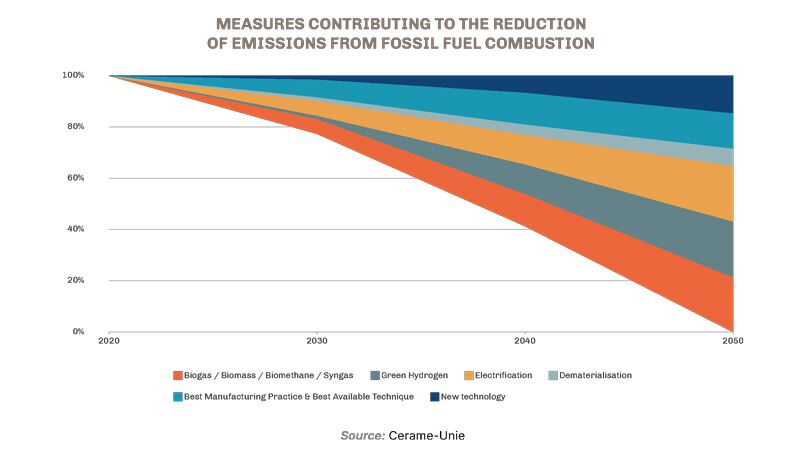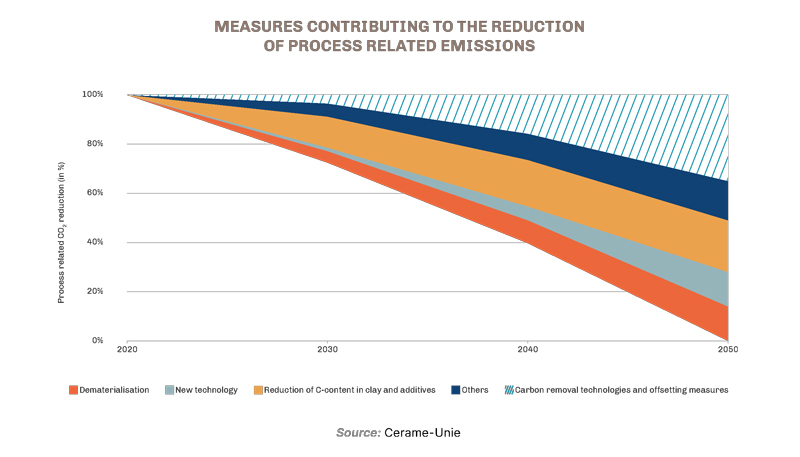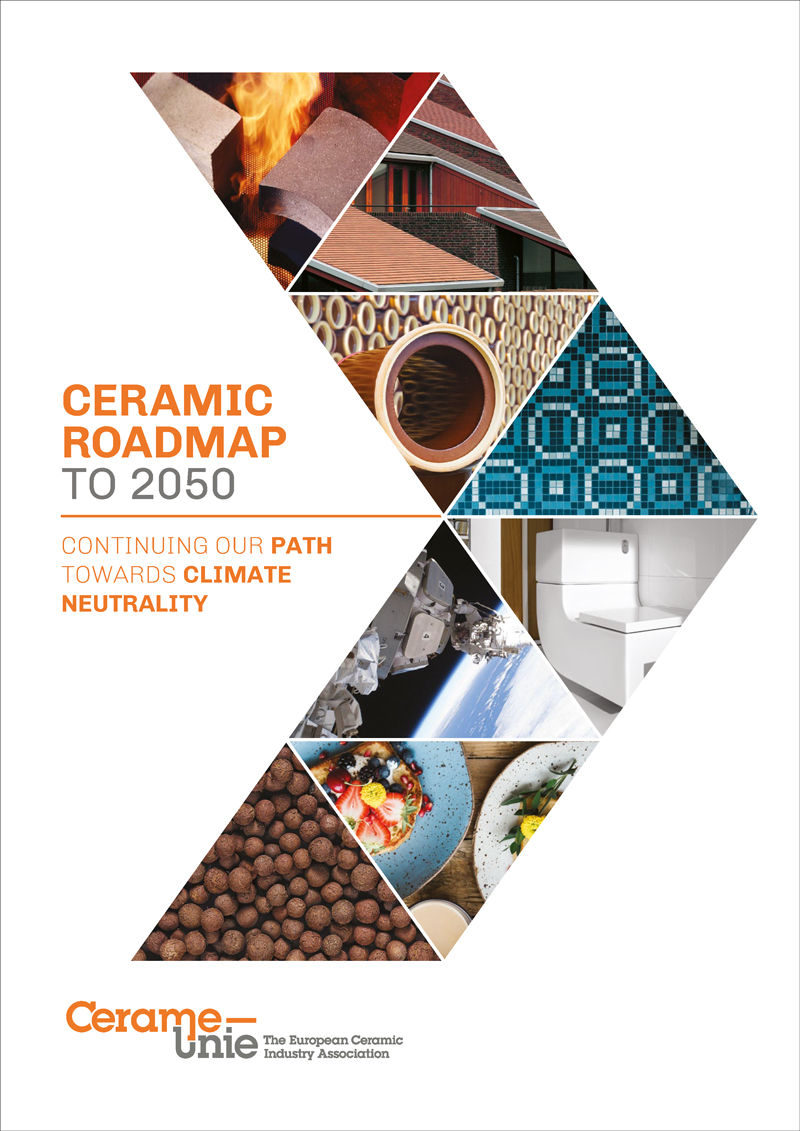The new energy transition challenges introduced by the Green Deal include reducing CO2 emissions by 55% by 2030 and achieving carbon neutrality by 2050. While these are ambitious goals, they must be grounded in reality.
For hard-to-abate sectors like the ceramic industry, the energy transition will require strong institutional support to facilitate the development and application of new technologies. In the ceramic sector in particular, efforts to protect the environment go back a long way and the 2030 emission reduction curve is currently hampered by the limited applicability of some strategic levers and the scarcity of carbon-free fuels. Achieving the new targets will require a diversified portfolio of technologies, some of which however are not yet ready for actual use. This means that natural gas will not be replaceable in the immediate future and will remain the industry’s best fuel for the energy transition.
For the ceramic industry, the CCUS (Carbon Capture Usage and Storage) strategy will have limited scope for application due to the low CO2 concentrations at the emission points, while electrification has limited feasibility for use in the production process. The main strategy for achieving the 2050 energy transition targets will therefore be to focus on green fuels, i.e. replacing natural gas with biogas/biomethane or hydrogen (up to 50% to avoid affecting the quality of the finished product) while continuing to use existing technologies.
To achieve this, institutional action is needed in the form of a funding plan to support extensive research and development and the rollout of new technologies and energy carriers. At the same time, mechanisms should be put in place to support existing solutions such as cogeneration.
All of this is described in the Ceramic Roadmap to 2050 (download PDF here), a 70-page document produced by the European Ceramic Industry Association Cerame-Unie which testifies to the strong commitment on the part of all sectors of the ceramic industry (ceramic tiles, bricks and roof tiles, sanitaryware, tableware, refractories, technical ceramics, abrasives and clay pipes) to meeting the goal of climate neutrality and demonstrates the vital contribution made by ceramic materials to the sustainable building value chain.
December 2021



 Architects
Architects
 Construction firms
Construction firms






